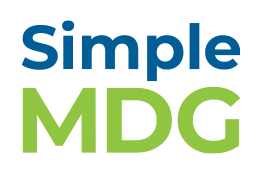SAP Data Services
Filter By
Browse By
- SAP Analytics and AI
- SAP Application Development and Integration
- All SAP Application Development and Integration
- SAP ABAP
- SAP ABAP Development Tools
- SAP ABAP Test Cockpit
- SAP API Management
- SAP BAPI
- SAP Basis
- SAP BRF
- SAP Business Application Studio
- SAP CMS
- SAP Design Studio
- SAP Development Tools
- SAP DevOps
- SAP EAI
- SAP EDI
- SAP Extension Suite
- SAP Fiori
- SAP Fiori Elements
- SAP Integration Suite
- SAP Low Code Application Development
- SAP Low Code Automation
- SAP Netweaver
- SAP Release Management
- SAP UI5
- SAP Web Application Server
- SAP Web IDE
- SAP Business Process Management
- SAP Center of Excellence
- SAP CIO
- SAP Customer Experience
- SAP Data and Data Management
- All SAP Data and Data Management
- SAP BW
- SAP BW/4HANA
- SAP Crystal Reporting
- SAP Data Archiving
- SAP Data Center
- SAP Data Governance
- SAP Data Integration
- SAP Data Migration
- SAP Data Quality
- SAP Data Services
- SAP Data Strategy
- SAP Data Visualization
- SAP Data Warehouse Cloud
- SAP DMS
- SAP Document Control
- SAP EIM
- SAP ETL
- SAP ETL Tools
- SAP HANA
- SAP HANA Administration
- SAP HANA Deployment Infrastructure
- SAP HANA Studio
- SAP Master Data
- SAP Master Data Governance
- SAP MDM
- SAP Enterprise Architect
- SAP Enterprise Asset Management
- SAP ERP
- SAP Finance
- All SAP Finance
- SAP Accounting
- SAP AR AP
- SAP Asset Accounting
- SAP Billing Systems
- SAP BPC
- SAP BRIM
- SAP Cash Management
- SAP Central Finance
- SAP Controlling
- SAP COPA
- SAP Cost Center Accounting
- SAP e-invoicing
- SAP FICO
- SAP Finance Automation
- SAP Financial Closing Cockpit
- SAP Financial Consolidation
- SAP Financial Planning
- SAP FX Risk
- SAP General Ledger
- SAP Global Tax Management
- SAP Hyperion
- SAP Order to Cash
- SAP Payment Processing
- SAP Profitability Analysis
- SAP Rebate Management
- SAP S/4HANA Finance
- SAP Universal Journal
- SAP Governance Risk and Compliance
- SAP Human Capital Management
- SAP Intelligent Technologies
- SAP Platform and Technology
- All SAP Platform and Technology
- SAP Business Technology Platform
- SAP Cloud Connector
- SAP Cloud Integration Platform
- SAP Cloud Migration
- SAP Cloud Platform
- SAP Cloud Providers
- SAP Cloud Strategy
- SAP Container Platform
- SAP Digital Asset Management
- SAP Digital Integration Hub
- SAP Digital Signature
- SAP HANA Enterprise Cloud
- SAP HEC
- SAP Hyperscalers
- SAP Infrastructure
- SAP Messaging
- SAP Smart Forms
- SAP Quality and Testing
- SAP Security
- SAP Spend Management
- SAP Supply Chain Management
- All SAP Supply Chain Management
- SAP APO
- SAP Asset Management
- SAP Business Network
- SAP Digital Manufacturing Cloud
- SAP Digital Twin
- SAP EWM
- SAP IBP
- SAP Inventory Management
- SAP Label Printing
- SAP Logistics
- SAP Manufacturing
- SAP Manufacturing Automation
- SAP MES
- SAP MII
- SAP MM
- SAP MRO
- SAP MRP
- SAP Order Management
- SAP Plant Maintenance
- SAP PLM
- SAP Production Planning
- SAP S&OP
- SAP SD
- SAP SPM
- SAP Supply Chain Planning
- SAP Track and Trace
- SAP Transportation Management
- SAP System Administration
What Is SAP Data Services?
SAP Data Services is an enterprise solution that offers data integration, profiling, quality, and text processing capabilities. It was formerly called SAP BusinessObjects Data Services.
SAP Data Services enables users to integrate, transform, and load data. SAP Data Services is a comprehensive extraction, transformation, and loading (ETL) tool. It supports loading of structured and unstructured data from SAP and non-SAP data sources into any SAP HANA application.
SAP Data Services combines the ability to execute data integration and ensure data quality and data cleansing.
Key Benefits and Capabilities of SAP Data Services
What Is SAP Data Services?
SAP Data Services is an enterprise solution that offers data integration, profiling, quality, and text processing capabilities. It was formerly called SAP BusinessObjects Data Services.
SAP Data Services enables users to integrate, transform, and load data. SAP Data Services is a comprehensive extraction, transformation, and loading (ETL) tool. It supports loading of structured and unstructured data from SAP and non-SAP data sources into any SAP HANA application.
SAP Data Services combines the ability to execute data integration and ensure data quality and data cleansing.
Key Benefits and Capabilities of SAP Data Services
SAP Data Services allows organizations to achieve a complete view of their information, standardize and match data to reduce duplicates and improve decision-making and operational efficiency, and integrate operational, analytical, machine-generated, and geographic data.
Key capabilities of SAP Data Services include:
- Universal data access
- Data quality dashboards
- Native-text data processing
- Simplified data governance
- Intuitive business user interfaces
- High performance scalability
Who Uses SAP Data Services?
According to SAPinsider contributor Michael Vavlitis, several types of users can leverage SAP Data Services, including source system experts, data analysts, developers, and ETL operation managers/data architects.
The core responsibilities of these roles can be summarized as follows:
- Source system experts – Provide information, metadata about source system and data content, as well as what tables and views to connect through using SAP Data Services
- Data analysts – Translate business requirements into functional requirements and required source data needs. Validate data test results, transformations, and data-cleansing activities.
- SAP Data Services developers – Create technical specs based on input from the data analysts. Responsible for developing all objects, schedules, and test procedures.
- ETL operations managers or data architects – Monitor daily processing of ETL jobs, error logs, manual fixes, connectivity, and security. Upgrade and apply SPs and SAP Notes to maintain the overall application. Track key performance indicators (KPIs) for service level agreements (SLAs), system availability, and overall performance. Responsible for maintaining development standards, standard operating procedures (SOPs), naming conventions, data dictionary, structured walkthroughs, and approvals. Act as the overall data architect for the SAP Data Services and related systems.
In 2019 Nancy Ochs explained during an SAPinsider event how CSL Plasma, a leader in plasma collection, enabled analytics advancements. The company divided its integrated SAP Data Services from the SAP BusinessObjects BI Platform to provide additional features and capabilities in data management and gain the ability to apply updates to the analytics platform and enterprise information management components independently. View the event presentation slides.
19 results
-

Panning for Golden Insights in Your Data Lakes
Reading time: 3 mins
While a data lake provides an economical storage option for information, it is not without its set backs. As data volumes continue to grow, it becomes more and more difficult to decipher the insights hidden within. Organizations must perform data discovery and exploratory analysis, in conjunction with analytic applications, to glean true value from their…
-

Dell and the Agile Data Mart
Reading time: 3 mins
Businesses of all sizes are feeling pressure from the ever-increasing data volumes they’re expected to handle. The growth in data often leads to “analysis paralysis” – the inability for organizations to determine just what data to trust or how to act on it. This was a prominent challenge at Dell, where reporting teams spent an…
-

- SAP Data Services
 Premium
Premium
8 Simple Steps for Creating a Successful Dashboard (Part 3): Steps 5 – 8
Reading time: 15 mins
The first two parts of this series of three articles reviewed the motivations and the value-add of this new process for creating dashboards. In this is third and last part, learn the details about the final four steps, including the actual dashboard design phases and its roll-out to users. Key Concept The demand for shorter…...…
-
-

Don’t Let SAP Data Collection Slow Down Your Overall Time to Market
Reading time: 2 mins
As the demand for the next cutting-edge product grows, so does the pressure on the supply chain. Suddenly, companies find themselves going to market more often and with shorter life cycles, putting supply chain processes to the test. Keeping up with demand requires rapid and efficient data collection, but many companies still rely on slow,…
-

SAP Data Services: Integrating with SAP Business Suite Sources
Reading time: 28 mins
Gain an overview of SAP Data Services and how to extract data by leveraging SAP Business Suite extractors. This content is for Basic Access, SAPinsider Monthly Subscription, SAPinsider Annual Subscription, and SAPinsider Premium Annual Subscription members only.Log In Join Now
-

- SAP Data Services
 Premium
Premium
How to Move SAP Data Services from One Data Center to Another
Reading time: 15 mins
Learn how to migrate an SAP BusinessObjects Data Services’ source data center to a target data center environment by following these step-by-step instructions. In this scenario, both the source and target systems are Windows-based servers. Key Concept The SAP BusinessObjects Data Services application delivers a single enterprise solution for data integration, data quality, data profiling,…...…
-

How to Move SAP BusinessObjects Data Services from One Data Center to Another
Reading time: 11 mins
Learn how to migrate an SAP BusinessObjects Data Services’ source data center to a target data center environment by following these step-by-step instructions. In this scenario, both the source and target systems are Windows-based servers. This content is for Basic Access, SAPinsider Monthly Subscription, SAPinsider Annual Subscription, and SAPinsider Premium Annual Subscription members only.Log In…
-
-

Quick Tip: How to Configure and Explore Date-Based Data Within Explorer 4.1 Information Spaces
Reading time: 5 mins
Learn basic concepts of SAP BusinessObjects Explorer 4.1. With these easy to follow step-by-step instructions, learn how to configure date-based data within an Explorer 4.1 information space so that date-based data can be displayed and analyzed. Also learn how to configure data-based data fields for analysis. This content is for Basic Access, SAPinsider Monthly Subscription,…
-

- SAP Data Services
 Premium
Premium
How to Configure and Explore Geographic Data within an Explorer 4.1 Information Space
Reading time: 9 mins
Learn basic concepts of SAP BusinessObjects Explorer 4.1. With these easy-to-follow, step-by-step instructions, learn how to configure geographic data within an Explorer 4.1 information space so that geographical data can be displayed and analyzed in a map. Also learn how to configure country, region, state, and city data fields for analysis. Key Concept An SAP…...…
Featured Insiders
-

Akash Kumar
Associate General Manager, HCL
-

Vijay Garg
Chief Architect, The Principal Consulting Inc.
-

Prathyusha Garimella
Senior Engineer at SAP America, Inc.
Become a Member
Unlimited access to thousands of resources for SAP-specific expertise that can only be found here.
Upcoming Events
Related Vendors
Your request has been successfully sent


